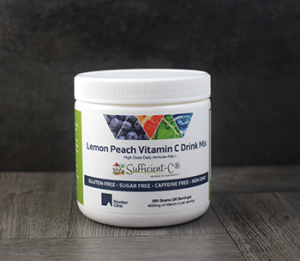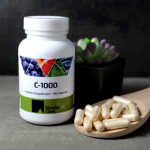Micronutrient Supplementation Program on the Levels of Vitamins, Minerals, Inflammation and Cardiovascular Risk Factors
Micronutrients are vitamins or minerals that the human body requires, but in small amounts, for normal growth and development. Deficiencies in the intake of these nutrients are significant public health concerns. The “classic” example is vitamin A deficiency in children, which leads to blindness and immune system compromise, the latter increasing the risk of death due to infectious diseases. Other important micronutrient deficiencies include iron, vitamin D, folate, and vitamin B12. Many nations have developed recommendations for the daily intake of micronutrients to prevent these sorts of deficiency based pathologies. As a result, multivitamin and multi-mineral supplementation (MVMM) has become common in children and adults. As MVMM has become more popular, interest in the possible health benefits of supplementation over and above the minimum daily requirements to prevent clinical manifestations of deficiency has increased.
There is growing interest in the role of micronutrients (essential trace elements and vitamins) in the optimization of health, and prevention and treatment of diseases. Since many of these nutrients have antioxidant properties, they are thought to be beneficial in preventing cancer (by reducing oxidation induced DNA mutations). Also, the ability of antioxidants to protect cell membranes and to increase telomere lengths in cellular DNA had led some to suspect they can reduce the effects of aging.
As multivitamin –multimineral supplementation is the most commonly reported supplement, it is important to study the health benefits associated with regular intake.
We investigated the use of a particular MVMM supplement, developed by the Pure North Foundation, on blood chemistry parameters and lipid profiles, along with the inflammation marker C- reactive protein, in 100 steel company workers over a one year period of supplementation.
According to our study:
- participants with lower levels of vitamins D, B2, and C before supplementation tended to show higher levels of inflammation.
- Vitamin D levels correlated with a variety of lipid profile parameters. Analysis of the data after one year of supplementation demonstrated that participants with blood vitamin D concentrations above 30 ng/ml showed decreases in triglycerides, cholesterol to HDL ratio, and improvement of HDL levels.
- In addition, higher vitamin C levels were associated with lower triglyceride and VLDL levels.
- Blood concentrations of vitamin C, D, and E increased substantially as a result of supplementation, but coenzyme Q10 levels, lutein, lycopene, and vitamin A levels were not greatly affected.
- Looking into the distinction between smokers and non-smokers, our data indicate that improvements in antioxidant levels during MVMM supplementation are less dramatic in smokers. After one year supplementation, smokers had lower plasma antioxidant concentrations than nonsmokers. The greatest differences were found with lycopene, lutein, and vitamin A, while improvements in vitamin C, vitamin D and vitamin E were practically the same for both groups.
- Smokers had less improvement of the health score in comparison with non-smokers.
- For all participants, half year and one year of supplementation eliminated very low health scores, and increased the number of people with high scores.
We published our results in a peer-reviewed journal: Effects of Micronutrient Supplementation on Concentrations of Vitamins and Minerals, Inflammation and Cardiovascular Risk Factors. Mikirova N, Hunninghake R, Casciari J and Guilliams V. Vitamins and Minerals, 2014, 3(1):1-9





